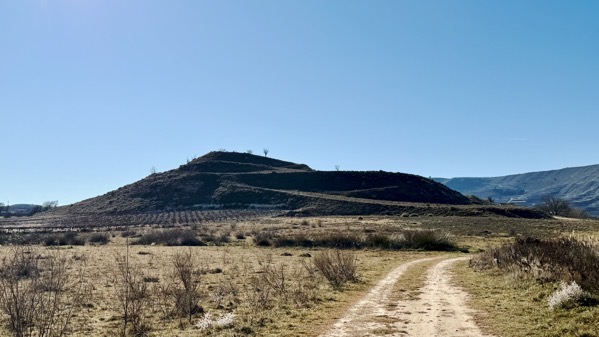
Today’s first stop was a Celt-Iberian settlement, apparently called Sekaiza, on this hill, named Poyo de Mara. We know the name of the fortification from coins the Romans allowed the city to mint—and pay taxes with. I hypothesize that it controlled passage through this valley and especially…
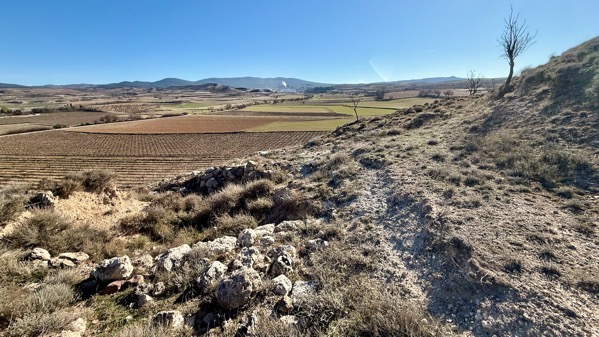
…broad farmlands to the east and south. Here’re the remains of houses/structures on northeast shoulder of a major terrace about half-way up/down the side slope of the landform. View to SSE.
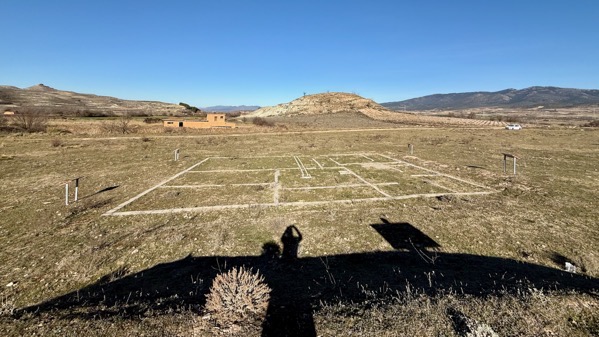
The Romans “destroyed” (conquered?) the settlement, and established their own settlement south of the hill, called Segeda. View north (see the hill?).
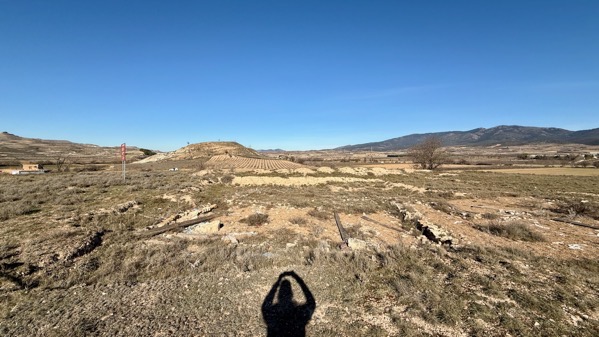
Here’re more foundations even further south. This was a big place, yet only occupied less than 200 years, I think.
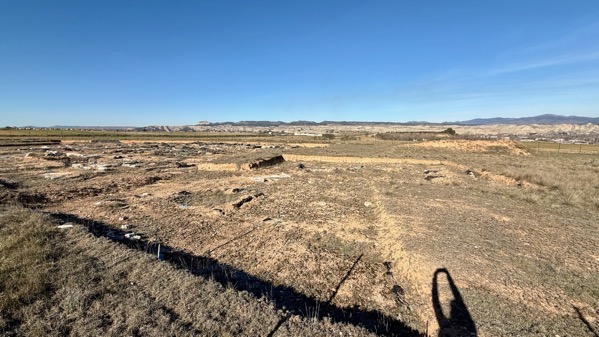
South of Calatayud on a broad hilltop was another Celt-Iberian-then-Roman settlement, today called Valdeherrera. It was contemporaneous with Sekaiza and similarly suffered Roman degradation later, as well as becoming a Roman settlement. I think the plow zone was removed with mechanical equipment, then hand excavations began. This was a residential and artisanal area of a much larger settlement. Valdeherrera and Segeda are about 8 miles apart, as the crow flies.
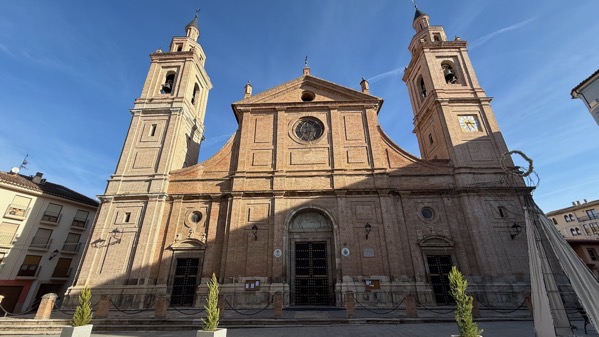
Mid-afternoon, we created our own walking tour of Calatayud. Here’s the main (WNW) façade of the Basílica-Colegiata del Santo Sepulcro.
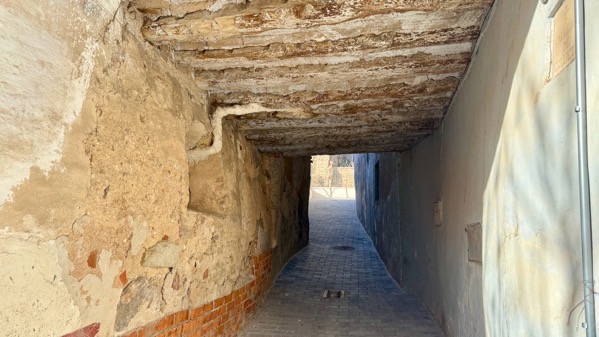
Low side passage with wooden beams supporting the rooms above.
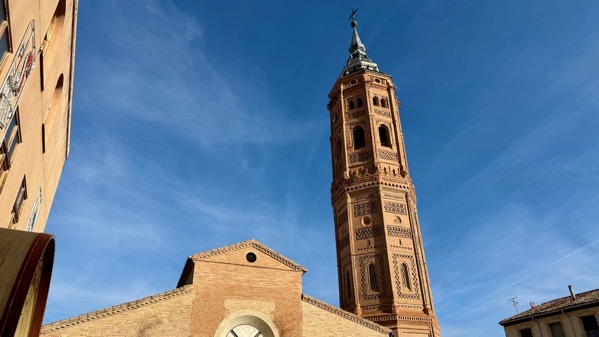
The late-day sun made the parochial church of San Andrés, with its famous octagonal Gothic-Mudéjar tower, glow. Mudéjar refers to Christian architecture design and decorative detail modeled on Arabic styles used during Al-Andalus times, when Muslims controlled much of Iberia.
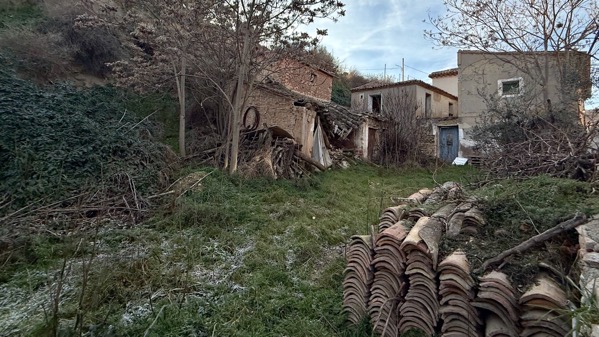
Abandoned compound.
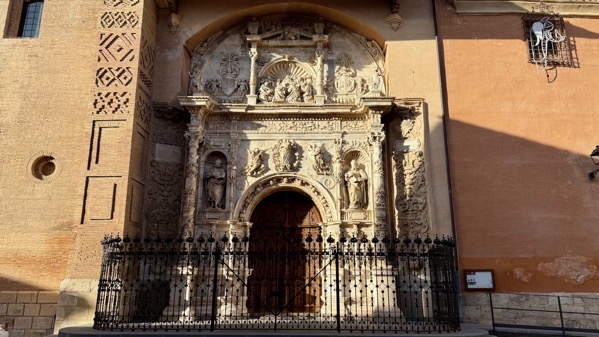
South door of Colegiata de Santa María la Mayor, built, I think, in the 14th C, rebuilt in the 15th C.
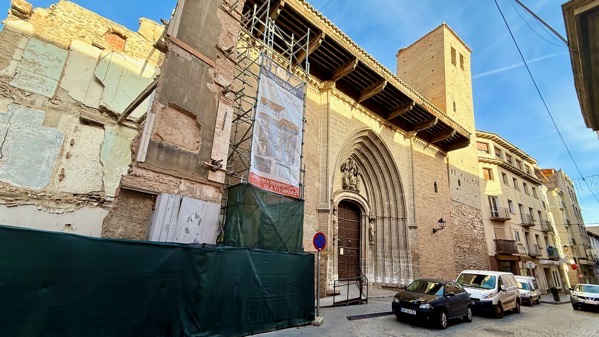
West door of Church of San Pedro de los Francos, with its famous leaning tower.
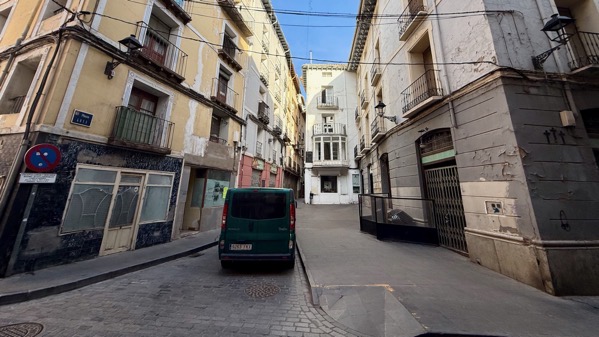
Tiny Plaza Goya, view to west.
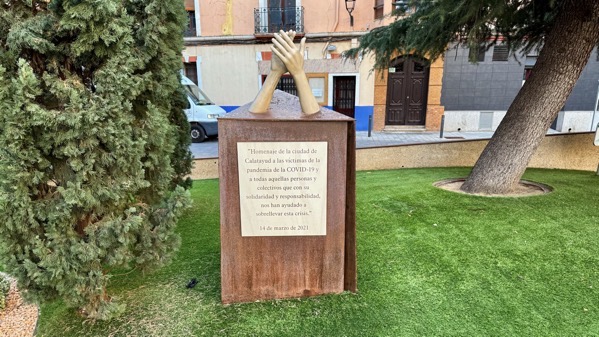
Monument set in astroturf honoring Covid victims and everyone for their solidarity, in Plaza Joaquín Costa. I couldn’t find out one thing about Sr. Joaquín Costa in a quick web search. Shrug.
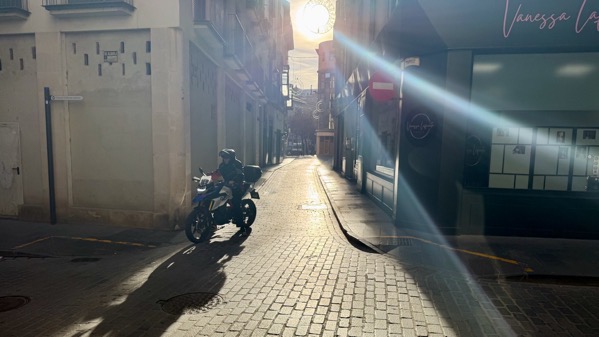
Backlit moto.
Thank you for your patience.